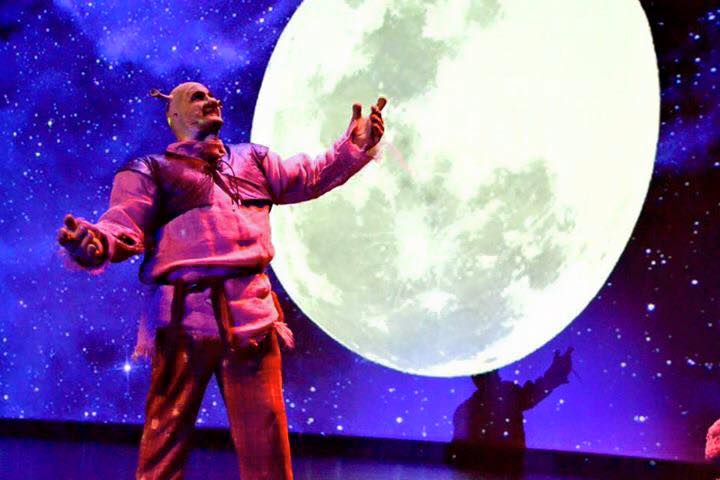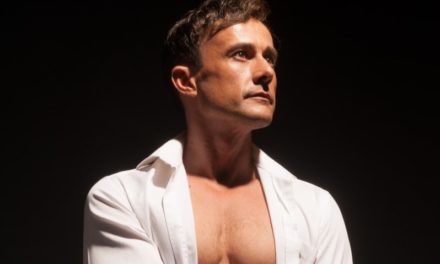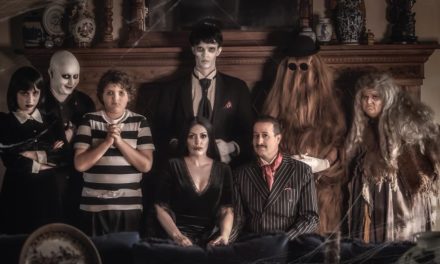COTTONWOOD HEIGHTS — It’s difficult to review community theatre fairly because the reviewer has to make concessions for the limitations of this sort of show: a company’s non-professional cast and crew, a small budget, and rehearsing in a borrowed space. But Cottonwood Heights’ production of Shrek begs the question, where should UTBA draw the line between a pleasant if under-resourced piece of theatre and a community roadshow?
Shrek the Musical is a musical based on the 2001 Dreamworks movie of the same name. It follows everyone’s favorite ogre and his donkey cohort on a quest to rescue a princess from a dragon-guarded tower in order to get the deed to his swamp back from a tiny-yet-terrifying aristocrat. It’s pretty standard fractured fairy tale fare, but despite its uneven script (by David Lindsay-Abaire), there are a few fantastic songs (with lyrics by Lindsay-Abaire and music by Jeanine Tesori), and the themes of self-acceptance give this show the potential to be something special.
Unfortunately, it would be hard to pick Cottonwood Heights Arts Council’s production of Shrek out of a lineup. Director Lindy Bowthorpe-Davis seems to have bitten off more than she can chew with a mammoth 65-person cast in a largely spectacle-driven show on a shoestring budget. That means we’re left with a nonexistent set, unimaginative costumes, and mostly one-dimensional performances.
 I was overwhelmed by the sheer number of actors on stage during the group scenes. In “Story of My Life” and “Freak Flag,” I didn’t know where to look. Most of the actors did not have microphones, and without any sort of clear visual cues, I couldn’t tell who was singing. Put simply, the size of the cast got in the way of the storytelling.
I was overwhelmed by the sheer number of actors on stage during the group scenes. In “Story of My Life” and “Freak Flag,” I didn’t know where to look. Most of the actors did not have microphones, and without any sort of clear visual cues, I couldn’t tell who was singing. Put simply, the size of the cast got in the way of the storytelling.
Additionally, there didn’t seem to be rhyme or reason to the costume design by Collette Osburn. There was a viking in a pair of tie-dye long johns, a drive-by Greek village, a set of blind go-go mice, and a pantsuit-wearing skeleton backup chorus. Aside from that, the background characters seemed to be one giant copyright infringement—from Buddy the elf to Princess Anna (complete with giant stuffed Olaf) to Flora, Fauna, and Merryweather, and every recognizable Disney character in between. It looked like the cast members got to choose their costumes—which is typical of community theatre—but without costumes to help define of the world the story, I was confused about who, when, and where they were in almost every scene.
The live orchestra (directed by Shaun Davis) sounded spectacular, probably better than the one on the original Broadway cast recording. But without the benefit of a pit to sit in, the music drowned the actors out on several occasions.
The show was performed on a bare stage with the exception of a couple of roll-away trees and towers. Instead of a set, Bowthorpe-Davis chose to use projections (by Dave Bates and John Koncar) to define each scene. This was effective during “Travel Song” as Shrek and Donkey set out on their journey and during “I Think I Got You Beat” when Shrek and Fiona’s fart cloud rose up and killed all of the sunflowers in the field behind them. It was especially cool during Fiona’s transformation at the wedding, with a flurry of sparkles swirling around her and appearing to land on her dress. But it was a problem in many instances when the actors walked too close to the screen and blocked out a portion of the image, effectively shattering the illusion.
There were many ensemble members who were clearly talented. Heather Fellows was a knock-out as the dragon. Devin Johnson had a brief but powerful solo in “Freak Flag,” and the highlight of the evening was Mila Howells as Young Fiona. Each of these women brought some much-needed energy to this plodding show. I wish every cast member had been as charismatic as little Miss Howells. Perhaps then the scenes wouldn’t have dragged on, the jokes might not have become tired, and the show might not have felt flat and lifeless.
As for the lead actors, Austin Singley (as Donkey) played to the audience too much. His scenes felt more like mini-standup shows than anything else. And Singley’s performance seemed he relied too heavily on Eddie Murphy for his inspiration. Alexia Adair (as Fiona) was very much the stereotypical princess. She was young, prim, proper, and incapable of solving her own problems. That might be okay for a more traditional fairy tale, but it didn’t jibe with Fiona’s feisty, somewhat jaded, nontraditional character. Zac Freeman’s performance (as Shrek) was sweet—perhaps too sweet. Without a really strong sense of the crotchety loner Shrek had always been, his transition to a love-struck swain was more of a slight shift than a complete turnaround.
Darrin Weir, playing the villain of the show, faced a difficult challenge: Farquaad is traditionally played by an actor on his knees with tiny fake feet dangling from his disproportionately large torso. When it’s executed well, this is great schtick. Unfortunately, Weir didn’t have command of the physical gag. He seemed to be concentrating so hard on not tripping over his cape or on making his knee-walk look realistic that he tended to disappear into the background whenever he was on stage. He didn’t seem particularly powerful or dangerous. It felt like the stakes were low for all of the main characters.
Overall, this production of Shrek the Musical felt under-rehearsed and clumsy. There were technical elements that the actors had obviously not had a lot of time with. Among other things, Fiona and Shrek didn’t seem to know when the belches or farts at the end of “I Think I Got You Beat” were going to happen, Fiona missed her green spotlight in “Who I’d Be,” and there were often long pauses between lines. These are the things that we normally make concessions for in community theatre, but I can’t help feeling that these problems could have been solved—or at least mitigated—if there had been fewer people in the cast, if the director had had the chance to focus her energy on giving her actors and creative team good, solid direction, or if someone had decided to spend money used on the higher-than-Broadway-quality-programs on something more crucial to the success of the production.
As it stood, it didn’t feel like a community theatre show so much as a musical parade of local children in their favorite dress-up outfits loosely held together by a plot that had been stretched to its limits.
I’m a huge advocate of community theatre, and especially of letting children participate in it—I think it’s so important to teach children to use their voices. But at the end of the night I left frustrated and disappointed because I had just spent my valuable time essentially watching a roadshow. Mom and Dad would certainly like to watch Bobby and Betty Jean frolic across the stage, but if you aren’t going to support someone in the cast, you might just be disappointed too.






